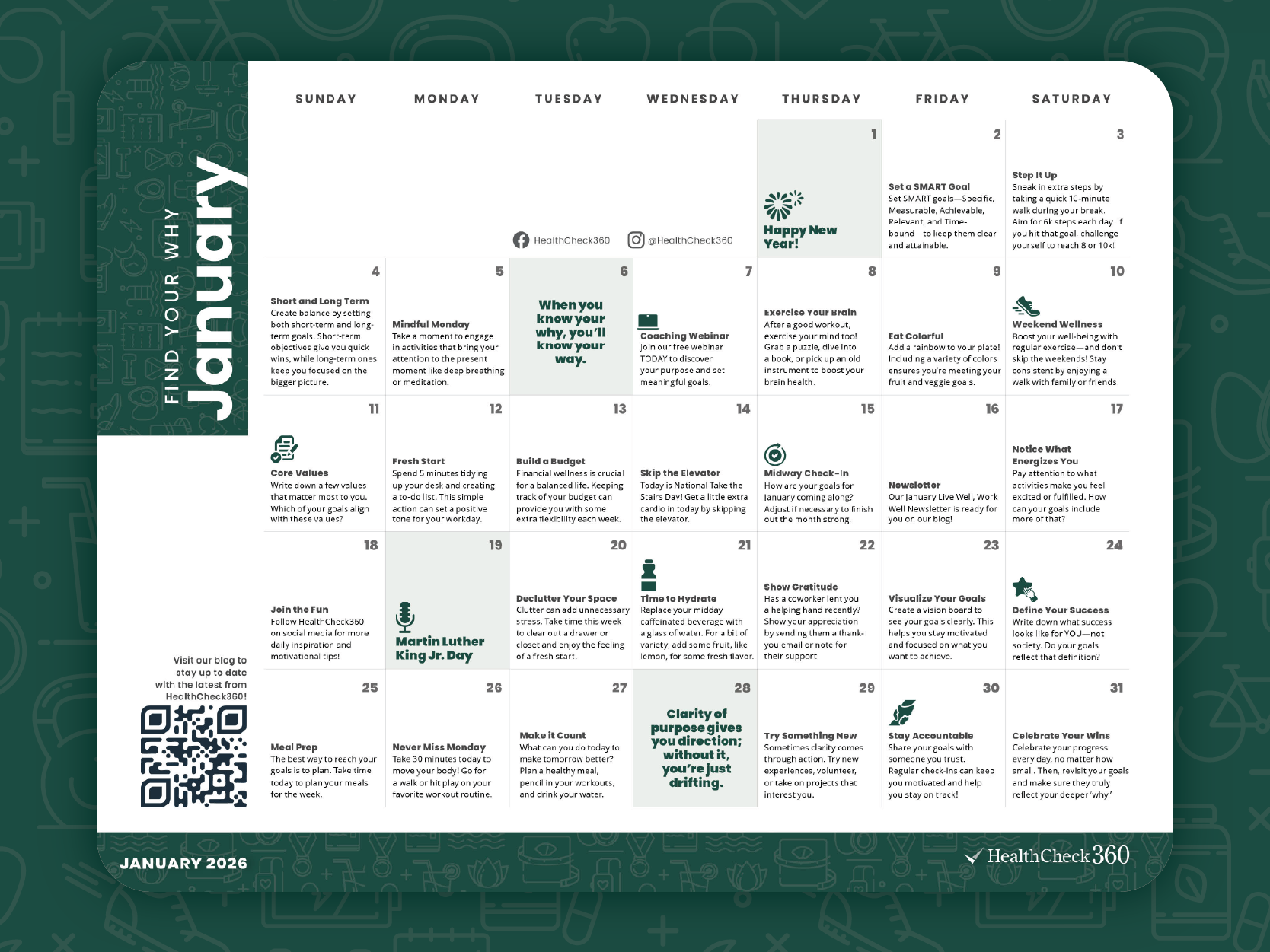Coaching Webinar | Find Your Why
Empower your employees to find their “why” and drive lasting change with our January coaching webinar!

SINCE 2016, employers offering wellness programs to employees have had to juggle two sets of conflicting and confusing rules: The Affordable Care Act (ACA) and the Americans with Disabilities Act (ADA) and the Genetic Information Nondiscrimination Act (GINA). The ACA governs the design of wellness programs offered in connection with a group health plan while the ADA and GINA govern voluntary wellness programs that ask disability-related questions or involve a medical exam.
IN AUGUST OF 2017, the AARP brought a lawsuit against the EEOC, arguing that the EEOC’s rulemaking was inconsistent with the ADA requirement that a wellness program must be voluntary to be exempt from the ADA’s prohibition against asking questions related to disabilities or requiring medical exams in connection with employment. The AARP argued that the EEOC had failed to give a rationale for its rulemaking (in contrast to its earlier position that even limited amounts of incentives could render a program involuntary) and therefore, should be prohibited from enforcing the rules. Judge John Bates of the U.S. District Court for the District of Columbia agreed with the AARP but declined to vacate the regulations on the basis that many employers had already designed their programs to comply with the new rules and to vacate them mid-year would be too disruptive. Instead, he remanded the issue to the agency for further analysis and consideration.
IN SEPTEMBER OF 2017, the EEOC announced that it intended to reissue proposed rules in August of 2018, with a final rule expected sometime around October of 2019 and a possible implementation date of 2021. The AARP then filed a motion to alter the earlier judgment in the case and vacate the rules but stay the mandate until January 1, 2018, or issue an injunction against enforcement of the laws effective January 1, 2018.
IN DECEMBER OF 2017, apparently unhappy with the glacial pace the EEOC took to revised rulemaking, the Judge granted the EEOC’s motion to vacate the ADA and GINA rules, but stayed the mandate until January 1, 2019, to avoid further disruption to employers.
WHAT'S NEXT
It’s difficult to speculate on the potential outcomes of this case. I believe the best summary of potential outcomes was provided by Barbara J. Zabawa, JD, MPH the founder of the Center for Health and Wellness Law, LLC in her Shortlister Blog article titled, “Wellness Incentives Are Not Dead Yet.” She provides four potential scenarios:
NOW WHAT?
I believe that it is extremely unlikely that this issue will go unresolved into 2019. Both sides of the aisle in Congress have demonstrated support for workplace wellness and associated incentive programs (both participatory and outcome-focused). Congress was clear in its intent when it codified wellness incentive rules in Health Care Reform. Most importantly, we do not believe that the current pro-business administration will allow this court case to remove the ability of the vast majority of employers to provide what they believe to be valuable and beneficial programs for controlling long-term health care costs.
OUR RECOMMENDATION
With all of this in mind, we suggest that employers:
It’s unlikely that there won’t be a resolution to remove the risk to programs used by the vast majority of employers. We believe that the provision of biometric screenings, health risk assessments, and associated incentives will be around for a very long time.
To learn more about how we help you navigate the regulatory environment, check out our website, or get in touch.
Please note: This is not intended as legal advice. Please work with your employee benefits consultant and your legal counsel on all regulatory or legal concerns.
1Recall that the ADA safe harbor permits employers who have wellness programs tied to their health insurance plan to conduct medical examinations of employees to administer and underwrite insurance risks associated with an employer’s health plan. 42 USC § 12201(c).

Empower your employees to find their “why” and drive lasting change with our January coaching webinar!

Help your employees start the year strong with our January well-being calendar!
![[Free Resource] 2026 Well-Being Calendar](https://www.healthcheck360.com/hubfs/1.%20Marketing/Yearly%20Well-Being%20Calendar/2026%20Yearly%20Well-Being%20Calendar/2026%20Yearly%20Content%20Calendar-Hubspot_Blog.png)
Streamline your planning and inspire your community for a fresh, healthier year with the 2026 well-being calendar!